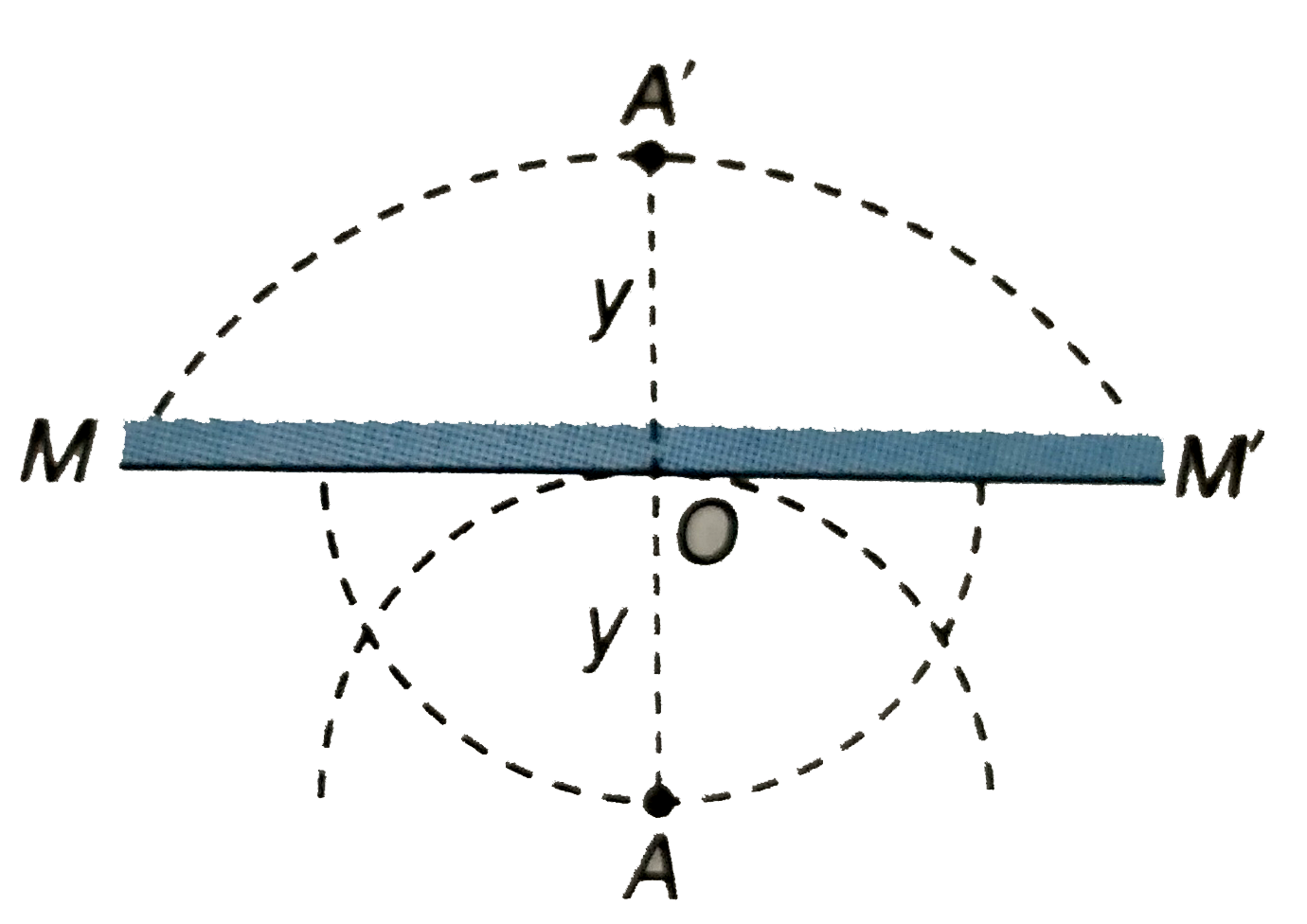Use Huygens' principIe to show that a point object pIacecd in front of a pIane mirror produces a virtuaI image at the back of the mirror whose distance is equaI to the distance of the object from the mirror.
Let A be a point source of light a distance y from the plane merror MM . In absence of the mirror let the wavefront travel A ' in time t. But due to the presence of the mirror the reflected wavefront will reach the point A in the same time interval t.
Thus AA' =ct (here , c=velocity of light )
i.e AO +OA ' =ct Again AO+OA =ct
∴ OA =OA'

Topper's Solved these Questions
- LIGHT WAVE AND INTERFERENCE OF LIGHT BOOK - CHHAYA PUBLICATIONCHAPTER - LIGHT WAVE AND INTERFERENCE OF LIGHT EXERCISE - NCERT EXEMPLAR QUESTIONS WITH ANSWER HINT
3 Videos
- LIGHT WAVE AND INTERFERENCE OF LIGHT BOOK - CHHAYA PUBLICATIONCHAPTER - LIGHT WAVE AND INTERFERENCE OF LIGHT EXERCISE - EXERCISE (Multiple Choice Questions )
5 Videos
- LIGHT WAVE AND INTERFERENCE OF LIGHT BOOK - CHHAYA PUBLICATIONCHAPTER - LIGHT WAVE AND INTERFERENCE OF LIGHT EXERCISE - HIGHER ORDER THINKING SKILL (HOTS) QUESTIONS
27 Videos
- KIRCHHOFF'S LAWS AND ELECTRICAL MEASUREMENT BOOK - CHHAYA PUBLICATIONCHAPTER - KIRCHHOFF'S LAWS AND ELECTRICAL MEASUREMENT EXERCISE - CBSE SCANNER
16 Videos
- Magnetic Properties of Materials BOOK - CHHAYA PUBLICATIONCHAPTER - Magnetic Properties of Materials EXERCISE - CBSE SCANNER
11 Videos
Similar Questions
You have learnt in the text how Huygens’ principle leads to the laws of reflection and refraction. Use the same principle to deduce directly that a point object placed in front of a plane mirror produces a virtual image whose distance from the mirror is equal to the object distance from the mirror.
View SolutionYou have learnt in the text how Huygens' principle leads to the laws of reflection and refraction. Use the same principle to deduce directly that a point object placed in front of a plane mirror produces a virtual image whose distance from the mirror is equal to the object distance from the mirror.
View Solution
Knowledge Check
The distance of the image from the mirror is _______ as/ the distance of the object from the mirror.
ALesser thanBGreater thanCSameDDifferentA concave mirror of focal length f produces a real image n times the size of the object. The distance of the object from the mirror is
A(n−1)fB(n+1)fCn+1nfDn−1nfA concave mirror of focal length produces an image m times the size of the object. If image is real, then the distance of the object from mirror is
A(m+1)fB(m+1m)fC(m−1m)fDmf
You have learnt in the text how Huygens’ principle leads to the laws of reflection and refraction. Use the same principle to deduce directly that a point object placed in front of a plane mirror produces a virtual image whose distance from the mirror is equal to the object distance from the mirror.
View SolutionA concave mirror of focal length/produces a real image n times the size of the object. What is the distance of the object from the mirror ?
View SolutionA convex mirror of focal length f produced an image (1/n)th of the size of the object. The distance of the object from the mirror is
View SolutionAn object is placed in front of a convex mirror at a distance equal to the focal length of the mirror. If its focal length is 20 cm, the distance of the image from the mirror is ______ cm
View SolutionA convex mirror of focal length f produces an image (1n)th of the size of the object. Then the distance of the object from the mirror is
View Solution
